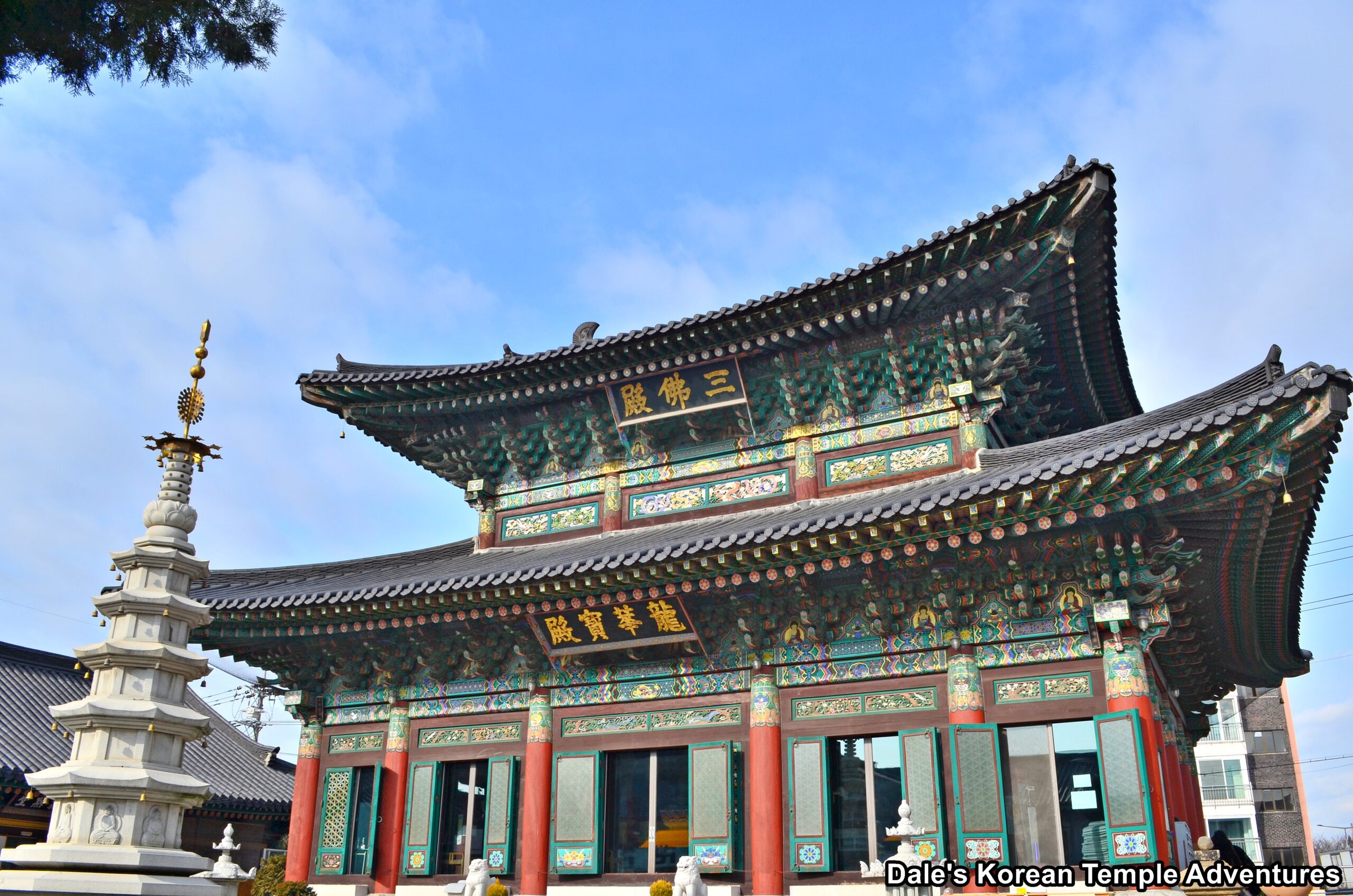
Temple History
Yonghwasa Temple is located in downtown Cheongju, Chungcheongbuk-do next to the Musimcheon Stream. The current Yonghwasa Temple was established in 1902. However, as a result of excavation work conducted by the Cheongju National Museum in 1992 near the Yonghwasa Temple grounds, it was confirmed that a larger temple existed in the area from the late Goryeo Dynasty (918-1392). As for the name of the temple, Yonghwasa Temple, it’s related to the belief that Mireuk-bul (The Future Buddha) will be reborn under a dragon flower tree upon his return as a Buddha.
Yonghwasa Temple is home to Korean Treasure #985, the Stone Buddhas of Yonghwasa Temple. The seven statues date back to the Goryeo Dynasty (918-1392). They were found at a temple site near the Musimcheon Stream, and they were moved to Yonghwasa Temple in 1902, when the temple was first established. According to a temple legend, the seven stone statues of the Buddhas appeared in a dream to Eom Seon-yeong (Imperial Consort Sunheon), who was the consort of King Gojong of Korea (r. 1864-1897), and the Emperor of Korea (r. 1897-1907). In this dream, the seven statues appeared to Eom Seon-yeong and asked her to build a house for them. Eom Seon-yeong sent a person to find the stone statues at the stream northwest of Cheongju. They were discovered; and then, Yonghwasa Temple was built to house the Stone Buddhas of Yonghwasa Temple.
In 1935, the temple was destroyed by fire. Kim Won-geun purchased a Chungcheongbuk-do government office at the time, and he moved the temple to its current location. And with him, he brought the Stone Buddhas of Yonghwasa Temple. During the Korean War (1950-1953), Yonghwasa Temple was completely destroyed. In 1972, a new concrete Mireukbo-jeon Hall was built to house the seven historic statues. Then, in 1995, the Yonghwabo-jeon Hall was built to house all seven statues. Finally, in 2008, the Geukrak-jeon Hall was built to house four of the seven statues. So now, the three largest statues are housed inside the Yonghwabo-jeon Hall.
Temple Layout
You first approach Yonghwasa Temple down a busy road next to the Musimcheon Stream. The first structure to greet you is a fortress-like entry gate. The second story of this structure acts as the Jong-ru (Bell Pavilion). It houses the four traditional Buddhist percussion instruments. As for the first floor of this structure, it acts as an entry gate to the rest of the temple grounds with a fierce pair of Narayeon Geumgang and Miljeok Geumgang (Heng and Ha) murals adorning the two entry doors.
Stepping inside the main temple courtyard, you’ll find a large collection of buildings to your left that are the temple’s dorms, visitors centre, and meditation centre. To your right are all the temple shrine halls.
Diagonally, and to your right, and through the temple parking lot and towards the Yonghwabo-jeon Hall, you’ll find an ornate five-story stone pagoda out in front of the main hall. The first of the five stories is adorned with various reliefs of Buddhas and Bodhisattvas. And the finial atop the pagoda is elaborate, as well, which only adds to the overall beauty of the stone structure.
Behind the five-story pagoda is the two-story Yonghwabo-jeon Hall. The exterior walls are adorned with Buddhist motif murals. Stepping inside the main hall, you’ll be overwhelmed by the three statues that await you. The Goryeo-era Stone Buddhas of Yonghwasa Temple are impressive in style and size. The tallest in the centre, which stands 5.5 metres in height, is dedicated to Mireuk-bul (The Future Buddha). To its left stands Yaksayeorae-bul (The Medicine Buddha, and the Buddha of the Eastern Paradise) and to the right stands Seokgamoni-bul (The Historical Buddha). Fronting these three historical statues are a collection of four modern stone statues dedicated to Jijang-bosal (The Bodhisattva of the Afterlife), Gwanseeum-bosal (The Bodhisattva of Compassion), Bohyeon-bosal (The Bodhisattva of Power), and Munsu-bosal (The Bodhisattva of Wisdom). Hanging on the far right wall is a large Shinjung Taenghwa (Guardian Mural). It’s also in this direction that you can go behind the main altar through a corridor. It’s from behind the main altar, and through a rectangular opening, that you can see a three metre tall stone relief on the back of the main altar’s Seokgamoni-bul statue. It’s quite impressive.
To the right of the Yonghwabo-jeon Hall is the Geukrak-jeon Hall. The exterior walls are adorned with redemptive Buddhist murals. Stepping inside the Geukrak-jeon Hall, you’ll find a triad of statues on the main altar. In the centre rests an image of Amita-bul (The Buddha of the Western Paradise). This image is joined on either side by statues of Jijang-bosal and Gwanseeum-bosal. These central images are book-ended by four more of the historic Stone Buddhas of Yonghwasa Temple. These four were built later than the three larger statues housed inside the main hall, and they represent the Nahan (The Historical Disciples of the Buddha) and Mireuk-bosal (The Future Buddha as a Bodhisattva).
Behind the Geukrak-jeon Hall is the Samseong-gak Hall. Housed inside this shaman shrine hall are three stone statues and three paintings dedicated to three of the most prominent shaman deities in Korean Buddhism. In the centre hangs a painting dedicated to Chilseong (The Seven Stars) and a statue out in front of it dedicated to Jeseok-bul (King of Heaven Buddha, Indra). To the right sits a statue and hangs a painting dedicated to Sanshin (The Mountain Spirit). And the same to the left; but this time, dedicated to Dokseong (The Lonely Saint).
How To Get There
From the Cheongju Intercity Bus Terminal, you’ll need to take Bus #717. After 12 stops, or 22 minutes, you’ll need to get off at the “Sajik 1dong Haengjeongbokji Centre Stop.” From this stop, you’ll need to walk about four minutes, or 300 metres, to get to Yonghwasa Temple.
The other way you can get to Yonghwasa Temple is by taxi from the Cheongju Intercity Bus Terminal. The taxi ride will take about 20 minutes, or 6.6 km, and it’ll cost you about 7,000 won (one way).
Overall Rating: 7/10
Without a doubt, the main highlight to Yonghwasa Temple are the historic Stone Buddhas of Yonghwasa Temple. They are all impressive in size and artistry. And the three largest of these statues are housed inside the beautiful two-story Yonghwabo-jeon Hall. Also of importance, at least artistically, is the beautiful five-story stone pagoda that stands out in front of the main hall, as well as the fortress-like entry gate that greets you at the front of the temple grounds.
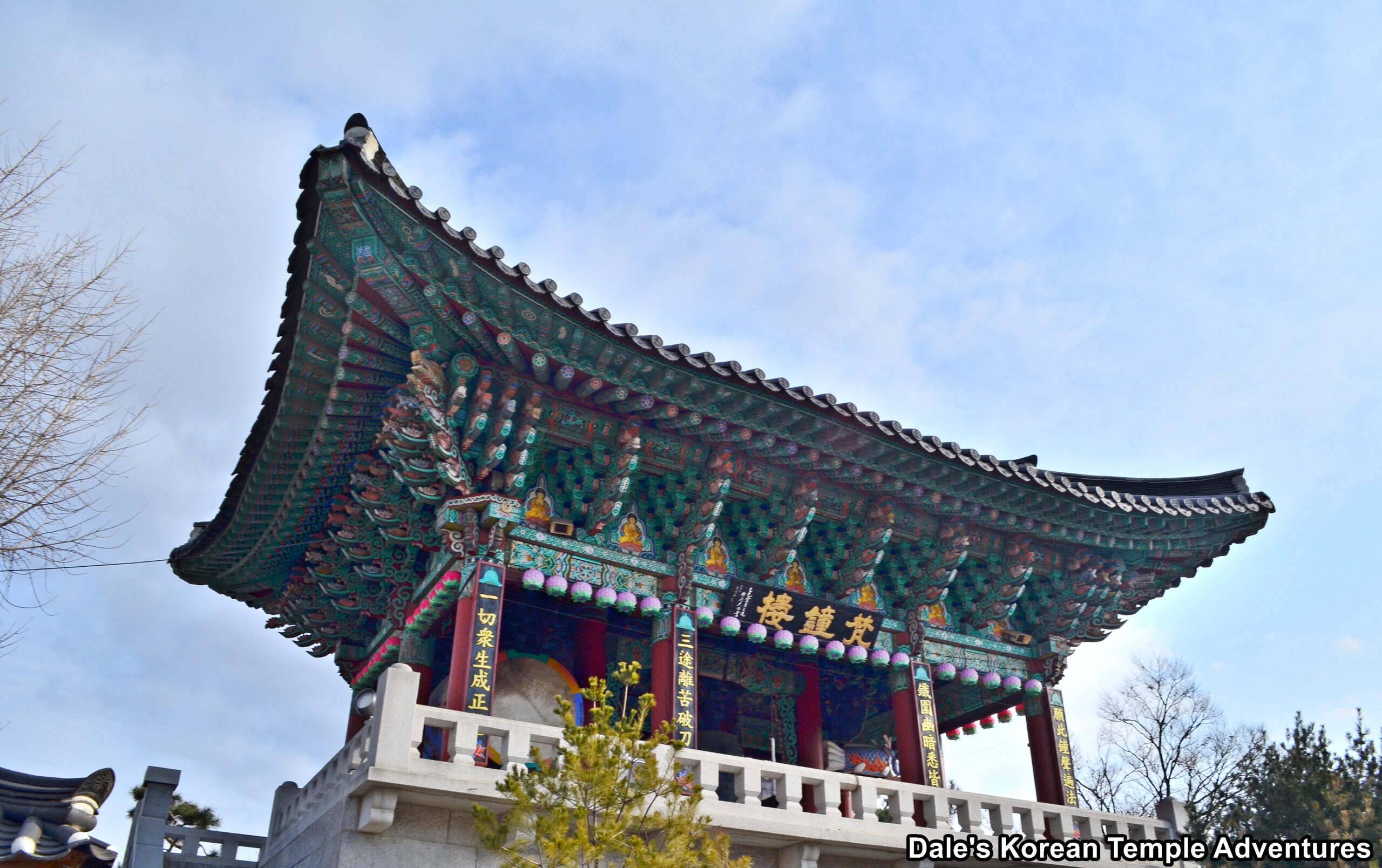
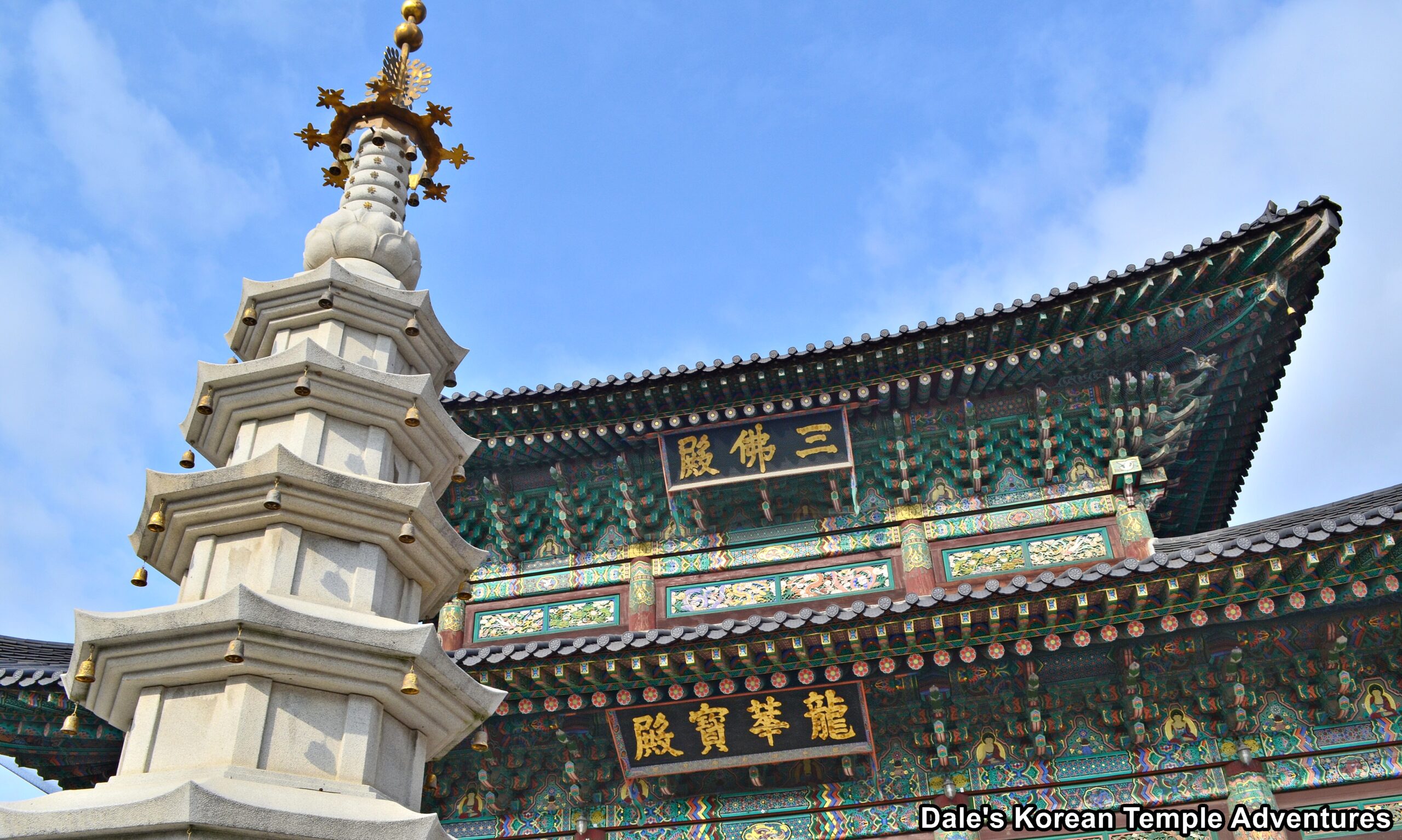
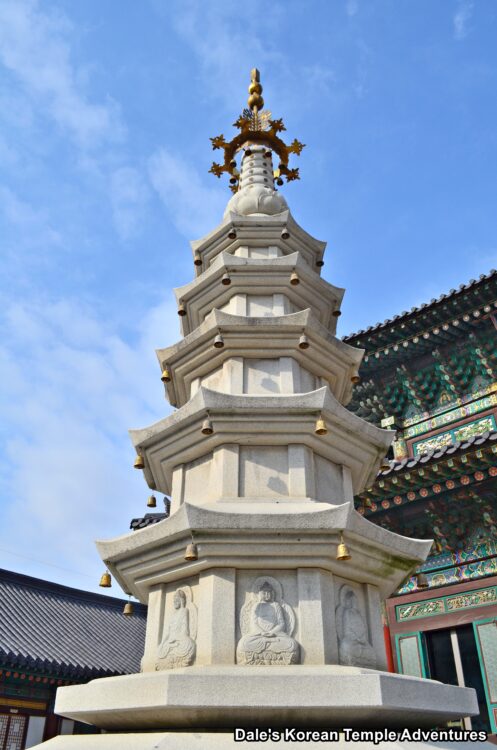
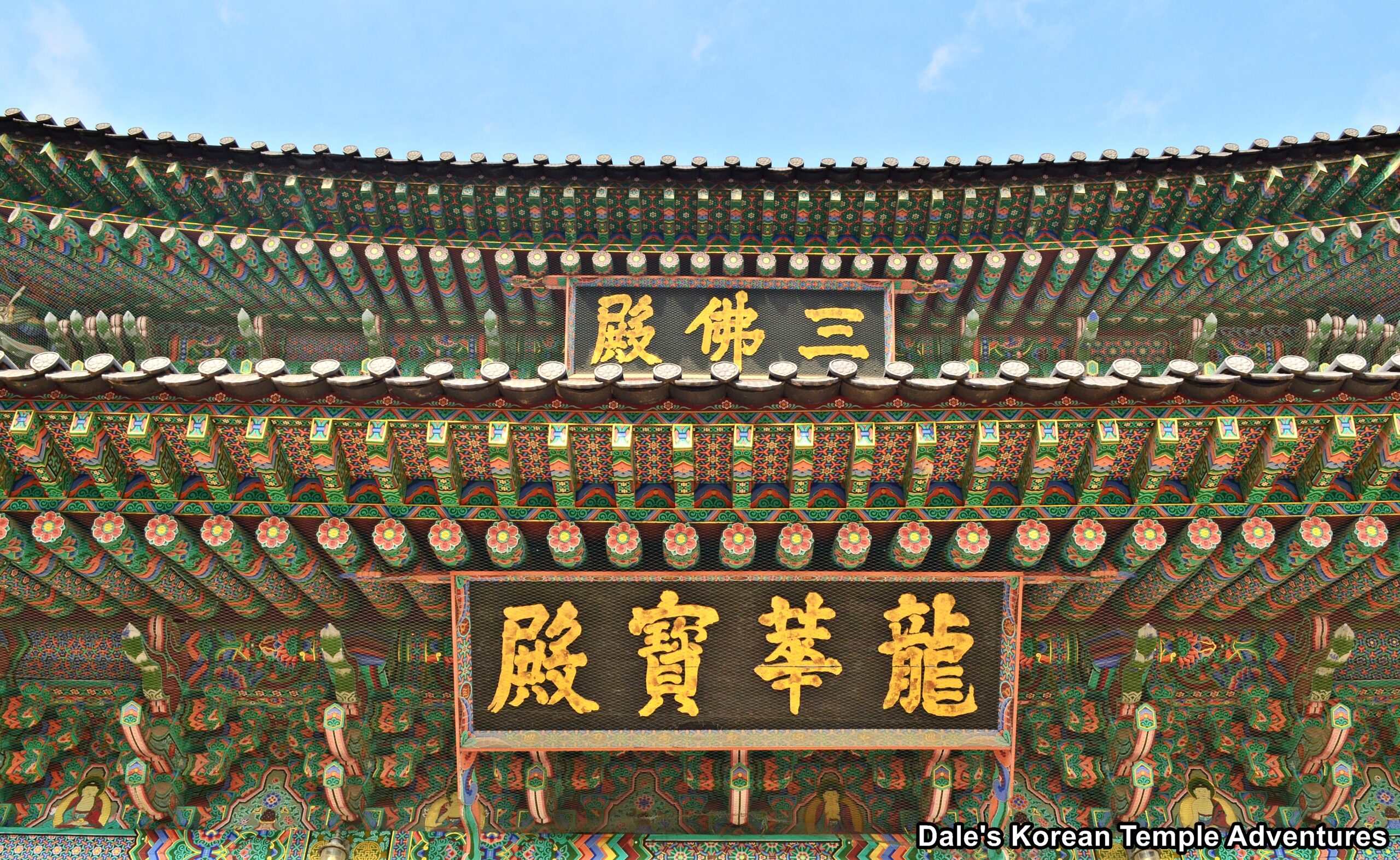
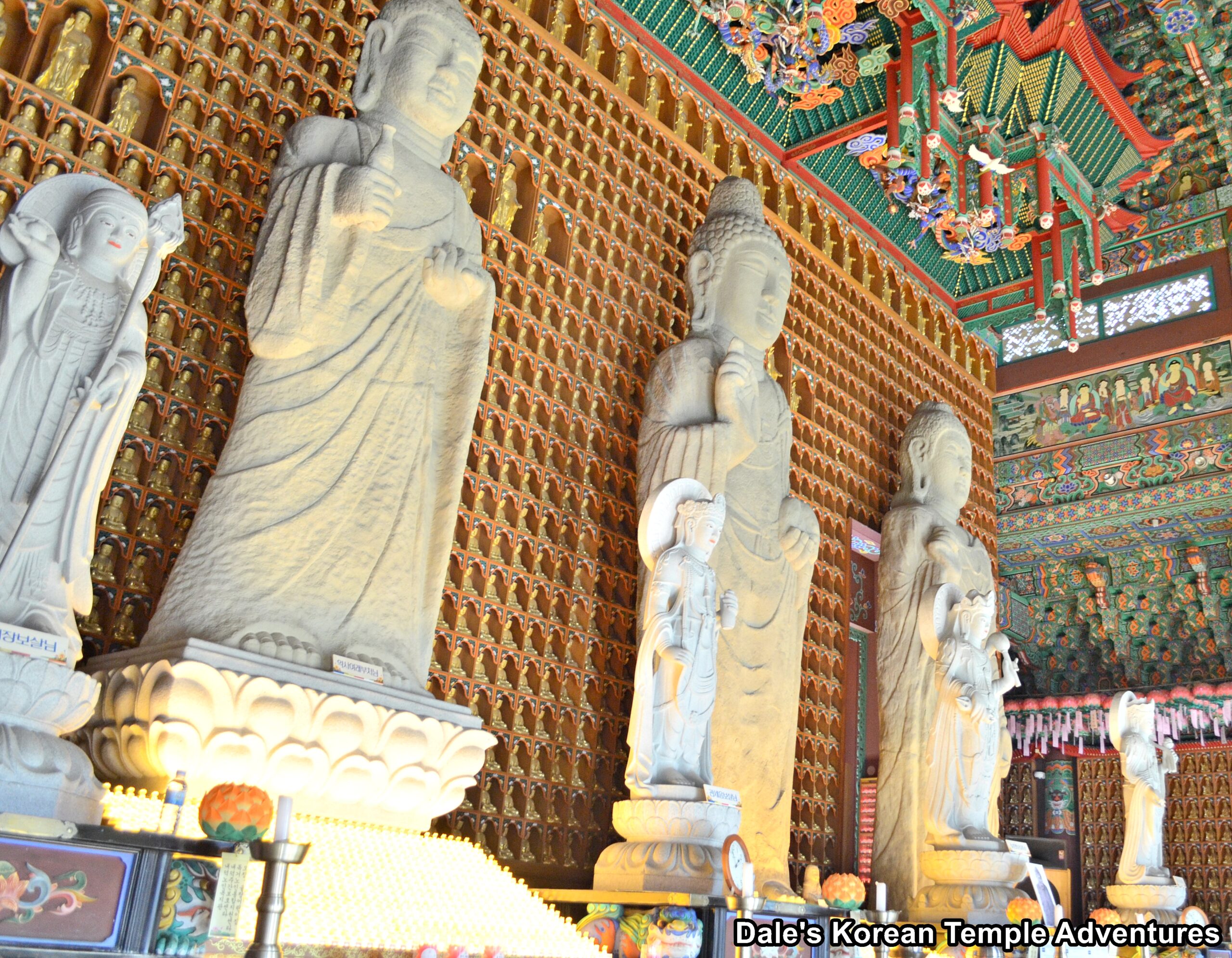
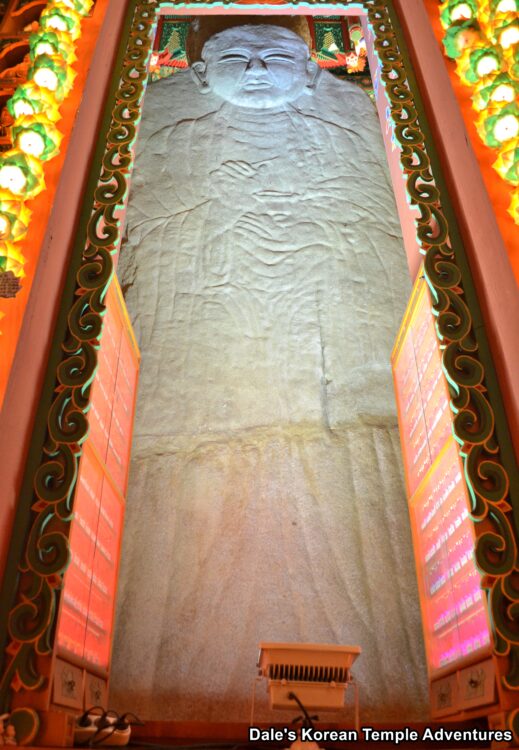

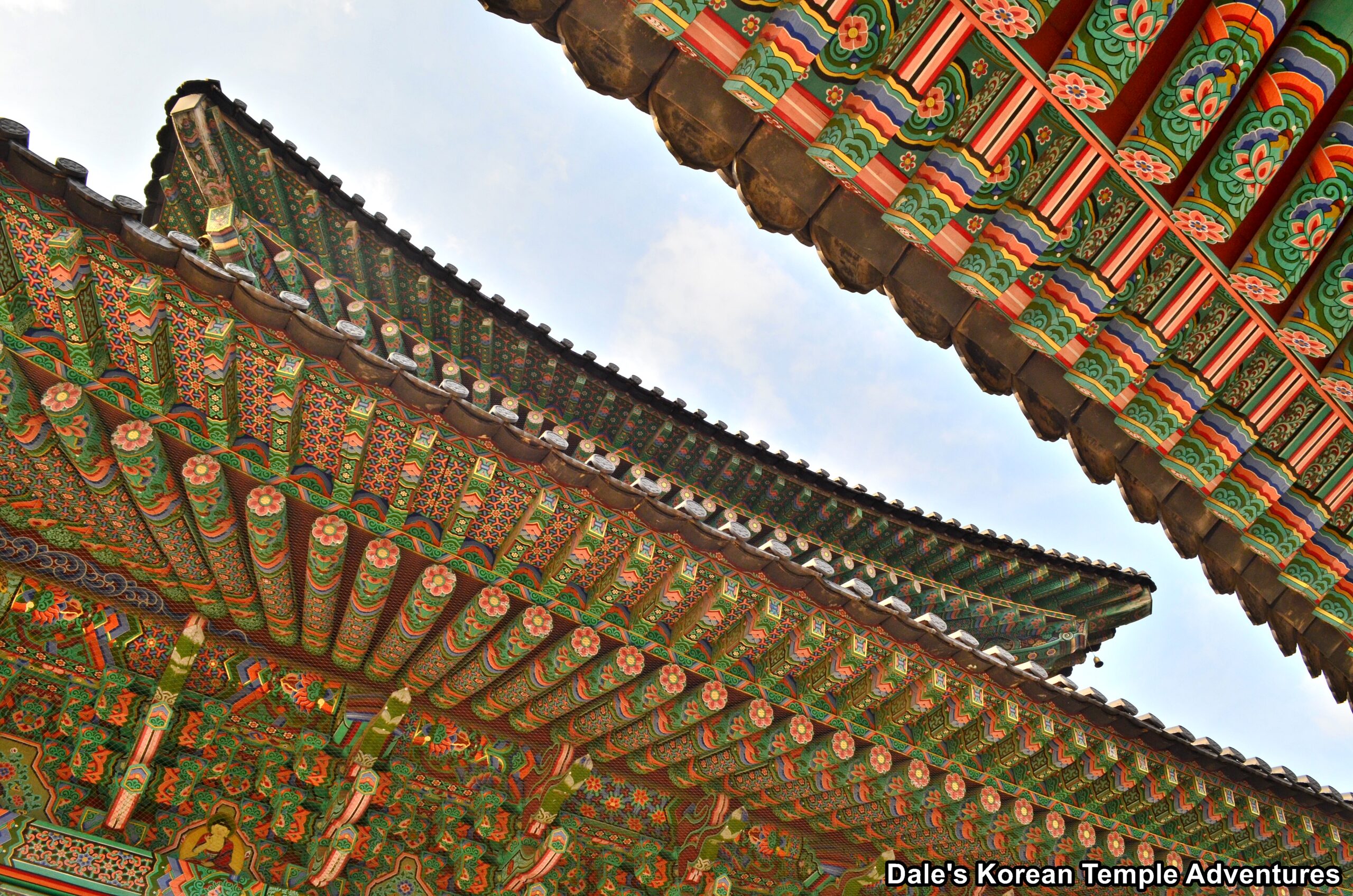
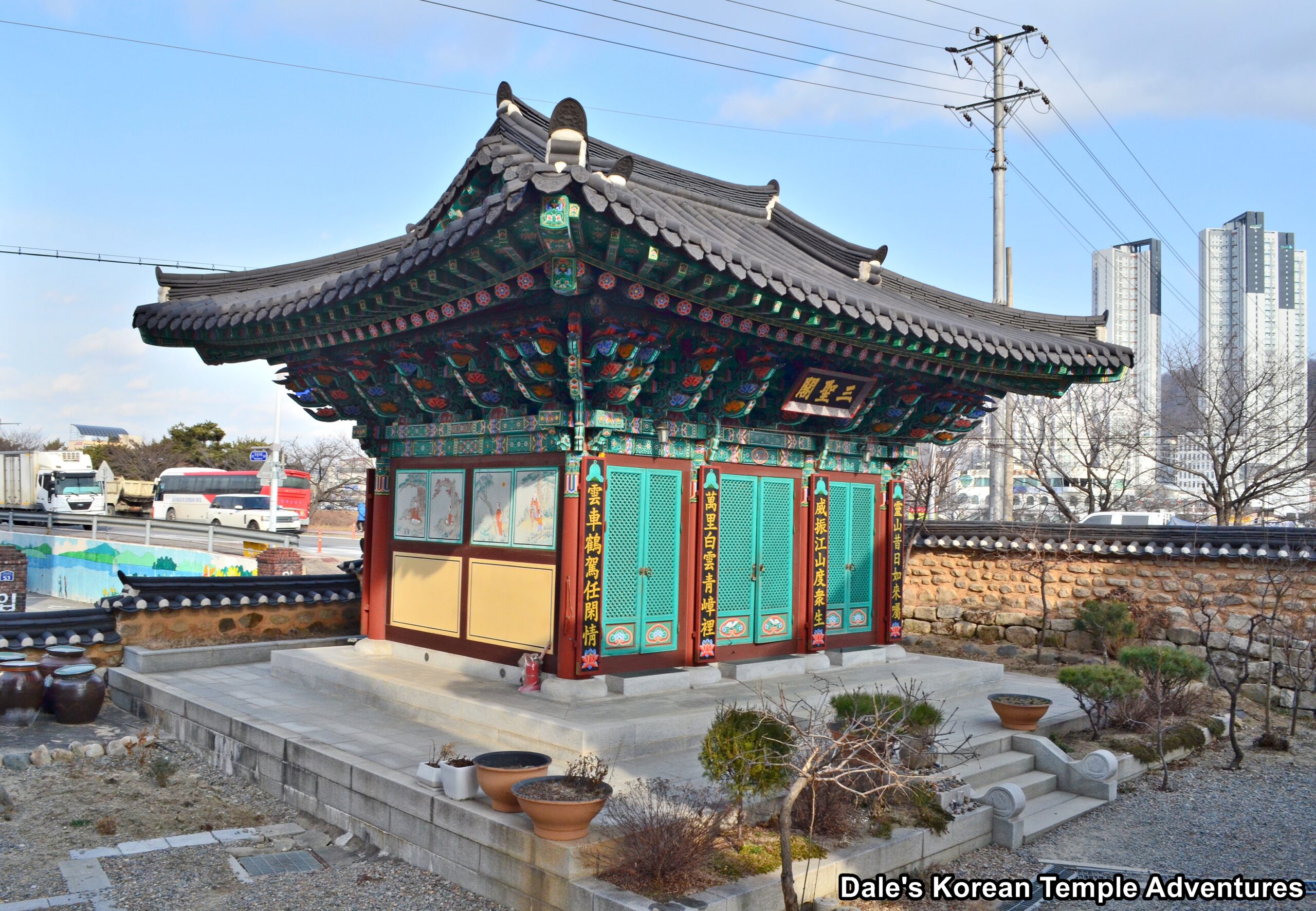
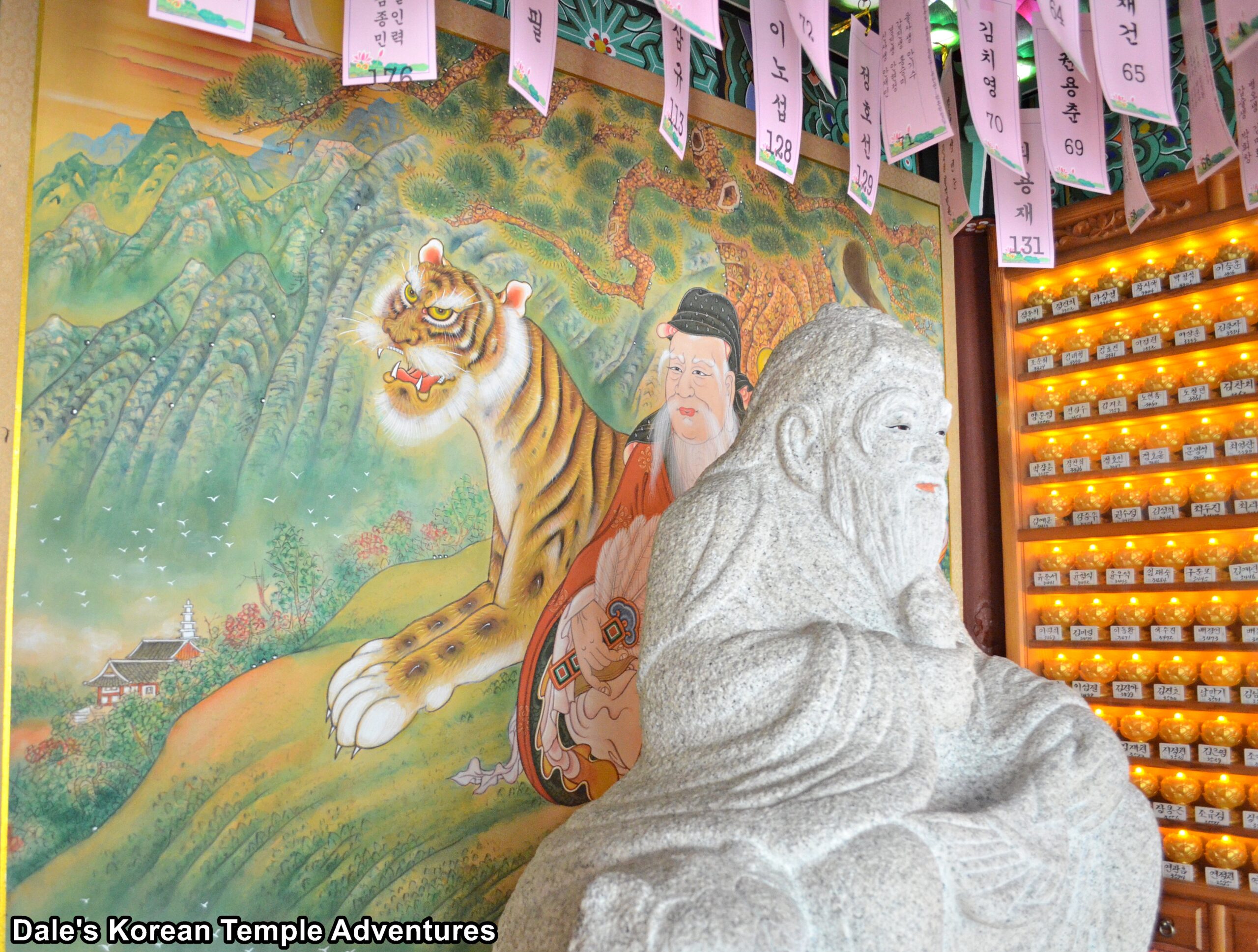


Recent comments